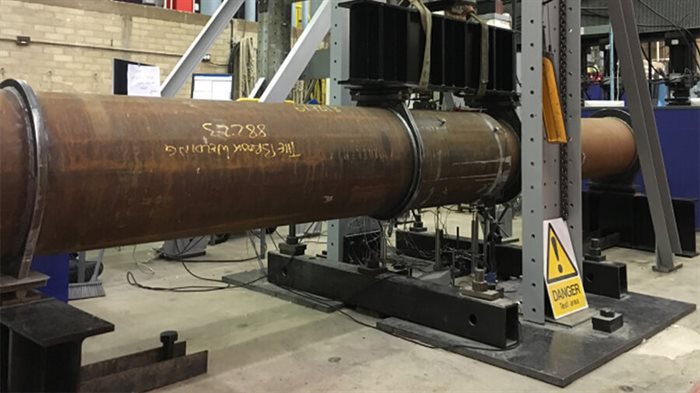Engineering should provide novel solutions for a resilient and sustainable built environment that can cope with natural disasters, environmental challenges and larger populations. In the current era of increasing extreme hazards due to climate change and potentially overlapping risks, including pandemics, research in the University of Birmingham targets holistic solutions for a safe, smart and green built environment.
We work on novel high-performance materials for steel, concrete and masonry structures; efficient member design and design methods for optimized and lighter structures; repair and strengthening strategies for existing structures or ageing infrastructure; strategies for re-use of structures; faster, cheaper and more resource efficient manufacturing processes; digital-twin technologies for city-wide disaster simulations and large-scale life-cycle analysis of the new products. Our experimental methods are unique and enable a more accurate interpretation of the structural response, such as the Hybrid real-time Simulation (HS), while measurement methods include the latest technologies for the measurement of the response in the tests, a complete Digital Image Correlation (DIC) system.

Our long-time research has introduced improved structural members made of high-performance steels, such as high-strength steels, ultra-ductile steels (stainless steel or low-yield-point steel), aluminium and induction-heat treated steels (quenched or annealed steels). Recent full-scale experiments have demonstrated effectiveness of these materials to enhance the robustness of steel buildings while reducing the total steel tonnage. Moreover, we have proved that the effective combination of concrete and steel in novel composite sections, like the concrete-filled steel tubular (CFT) sections, result in members that enjoy many advantages like higher strength-to-weight ratio and stiffness, better ductility, increased fire resistance and energy absorption capacity. Full-scale finite element simulations have highlighted these advantages for high-rise buildings, bridge piers, wind turbine towers and deep pile foundations. Large-scale experiments investigated grouted connections of monopiles used in offshore wind turbines revealing that a better understanding of these connections is vital as they present a significant point of failure of these structures.
Papers
Chen X, Zhang Y, Wang Z, Yu J, Skalomenos KA, Xu O (2022), Shaking table tests on a 5-storey unreinforced masonry structure strengthened by ultra-high ductile cementitious composites, Journal of Building Engineering, 104635, https://doi.org/10.1016/j.jobe.2022.104635
Skalomenos KA, Whittall T, Kurata M, Pickering J (2022), Component testing and multi-level seismic design of steel braced frames with high-post yielding stiffness and two-phase yielding, Soil Dynamics and Earthquake Engineering, 157, 107248, https://doi.org/10.1016/j.soildyn.2022.107248
Yapici O, Theofanous M, Yuan H, Skalomenos KA, Dirar S (2021), Experimental study of ferritic stainless steel bolted T-stubs under monotonic loading, Journal of Constructional Steel Research, 183 106761, https://doi.org/10.1016/j.jcsr.2021.106761
Serras D, Panagaki SD, Skalomenos KA, Hatzigeorgiou GD (2021), Inelastic lateral and seismic behavior of concrete-filled steel tubular pile foundations, Soil Dynamic and Earthquake Engineering, 143, 106657, https://doi.org/10.1016/j.soildyn.2021.106657
Hayashi K, Skalomenos KA, Shadiya J, Inamasu H (2021), Full-scale testing of naturally buckling steel braces and evaluation of partially rid-strengthened sections to cumulative damage, Soil Dynamic and Earthquake Engineering, 147, 106611, https://doi.org/10.1016/j.soildyn.2021.106611
Tziavos, N.I., Hemida, H., Dirar, S., Papaelias, M., Metje, N. and Baniotopoulos, C. (2020). Structural health monitoring of grouted connections for offshore wind turbines by means of acoustic emission: An experimental study. Renewable Energy, Vol. 147. pp. 130-140. ISSN 0960-1481.
Tziavos, N., Hemida, H., Metje, N., Baniotopoulos, C. (2019). Non-linear finite element analysis of grouted connections for offshore monopile wind turbines. Ocean Engineering, Vol. 171, pp. 633-645.